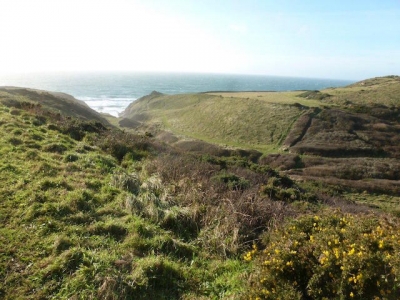 Caerthillian Cove on the south west tip of The Lizard peninsula is a site of botanical splendour. It is winter grazed by ponies to conserve its wonderful floristic diversity. In recent years the animals have been contained within temporary electric fencing. Despite being minimalistic this is still labour intensive, inconvenient for walkers, and detracts from the glorious landscape. This winter we are experimenting with an invisible fence system –and at the moment we are still holding our breath!!
Caerthillian Cove on the south west tip of The Lizard peninsula is a site of botanical splendour. It is winter grazed by ponies to conserve its wonderful floristic diversity. In recent years the animals have been contained within temporary electric fencing. Despite being minimalistic this is still labour intensive, inconvenient for walkers, and detracts from the glorious landscape. This winter we are experimenting with an invisible fence system –and at the moment we are still holding our breath!!
Over the past couple of decades nature conservationists have embraced the effectiveness and practicality of 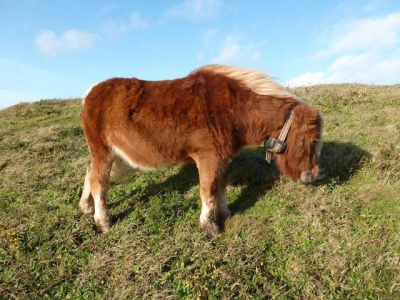 grazing as a vital management tool. All sorts of habitats – heathland, grassland, woodland, wetland – have benefitted from the attentions of all sorts of livestock – sheep, ponies, cattle and more. Grazing does come with down sides – the time and resources to care for the animals, and the need to contain them where their munching pays dividends – usually with fencing of some description. Recent technological advances have seen the development of systems to contain stock without fences – or ‘invisible fencing’, something of a holy grail for nature conservation managers.
grazing as a vital management tool. All sorts of habitats – heathland, grassland, woodland, wetland – have benefitted from the attentions of all sorts of livestock – sheep, ponies, cattle and more. Grazing does come with down sides – the time and resources to care for the animals, and the need to contain them where their munching pays dividends – usually with fencing of some description. Recent technological advances have seen the development of systems to contain stock without fences – or ‘invisible fencing’, something of a holy grail for nature conservation managers.
The system we are trialling is similar in principle to those readily available for domestic pets. It was originally developed for cattle; and it has taken a little trial and error to tune it for ponies. The boundary of the grazing unit is demarcated by a buried cable 3– no thicker than your little finger. This is connected to a solar-powered generator 1 which produces a radio signal along the length of the boundary. The ponies are fitted with neck collars 2 which carry a receiver box. It is amazing that the ponies have not at any stage seemed to even notice that they are wearing what look like St. Bernard kegs of rum!
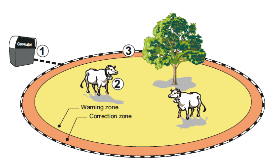 |
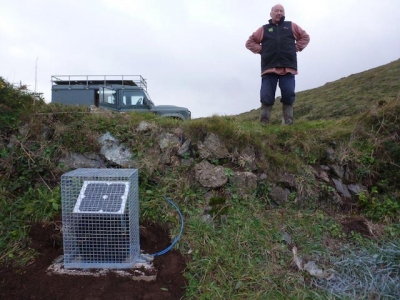 |
When a receiver-fitted pony is within 2m of the buried cable it hears a beep, a warning that it is in the proximity of the boundary. If the pony carries on toward the boundary it will get an electric shock from its collar, activated by the radio signal, when within 1m of the perimeter. It seems that the ponies become accustomed to the system within a few hours, perhaps at the expense of a ‘fall guy’ pony who learns the consequences of proceeding beyond the audible warning. Once the ponies are established within a grazing area encounters with the fence seem a rare occurrence.
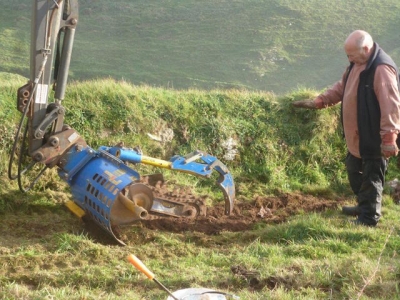 |
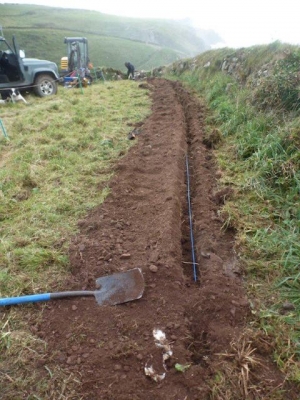 |
It is early days with this trial, and there are many questions to be answered over the coming months. Should we judge the trial a success there are many locations to which we might be able bring conservation grazing that is more people and landscape friendly. Fingers crossed.
For more info please contact steve.townsend@naturalengland.org.uk, or ring the NE National Nature Reserve office 01326 240808
Published: Dec 2015
Author: Steve Townsend (Reserve Manager-Lizard National Nature Reserve)
